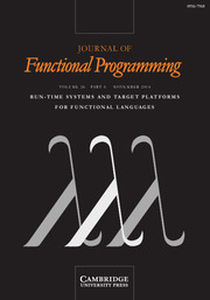Article contents
Semantics directed program execution monitoring†
Published online by Cambridge University Press: 07 November 2008
Abstract
Monitoring semantics is a formal model of program execution which captures ‘monitoring activity’ as found in profilers, tracers, debuggers, etc. Beyond its theoretical interest, this formalism provides a new methodology for implementing a large family of source-level monitoring activities for sequential deterministic programming languages. In this article we explore the use of monitoring semantics in the specification and implementation of a variety of monitors: profilers, tracers, collecting interpreters, and, most importantly, interactive source-level debuggers. Although we consider such monitors only for (both strict and non-strict) functional languages, the methodology extends easily to imperative languages, since it begins with a continuation semantics specification.
In addition, using standard partial evaluation techniques as an optimization strategy, we show that the methodology forms a practical basis for building real monitors. Our system can be optimized at two levels of specialization: specializing the interpreter with respect to a monitor specification automatically yields an instrumented interpreter; further specializing this instrumented interpreter with respect to a source program yields an instrumented program, i.e. one in which the extra code to perform monitoring has been automatically embedded into the program.
- Type
- Articles
- Information
- Copyright
- Copyright © Cambridge University Press 1995
References
- 9
- Cited by



Discussions
No Discussions have been published for this article.